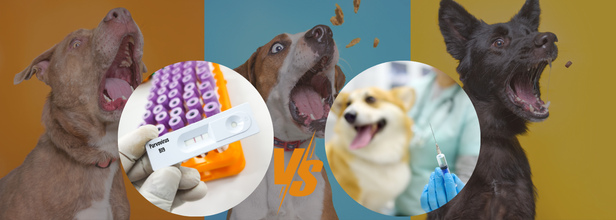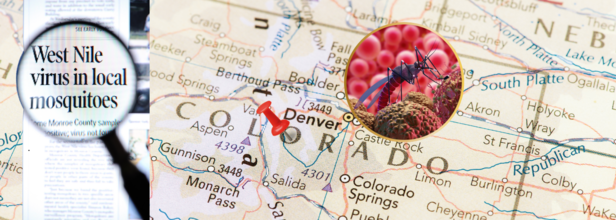- Health Conditions A-Z
- Health & Wellness
- Nutrition
- Fitness
- Health News
- Ayurveda
- Videos
- Medicine A-Z
- Parenting
- Web Stories
First-Ever Malaria Drug For Infants Approved, Here’s What It Means

The world has finally reached a milestone in the fight against malaria: the first-ever treatment specifically designed for newborns and very young infants has been approved. Until now, these vulnerable patients—often weighing less than 4.5 kilograms—were treated with medications intended for older children, risking overdoses and under-dosing due to immature metabolism. With the approval of Coartem Baby—also marketed as Riamet Baby—health authorities and families in malaria-endemic regions now have a safer, customized option.
Global malaria statistics are sobering. In 2023, there were approximately 263 million cases and 597,000 deaths worldwide—94% of cases and 95% of deaths occurred in Africa, and children under five accounted for nearly three-quarters of fatalities.
Treating infants using formulations developed for larger children carried significant risks. Their livers process drugs differently, making standardized dosing unreliable—and in some cases dangerous.
Developed by Novartis with support from Medicines for Malaria Venture (MMV), Coartem Baby combines artemether and lumefantrine in doses appropriate for infants weighing between 2 and 5 kg (4.4–11 lbs). Approved by Swissmedic under its Global Health Products fast-track, it is expected to swiftly receive authorization in eight African countries—including Nigeria, Kenya, Tanzania, and Uganda.
Its design addresses key challenges: the medicine dissolves easily—even when mixed into breast milk—has a sweet cherry flavor to aid dosing, and is suitable for field distribution
novartis.com.
Why It Matters Now?
This development marks a major advance in improving access to malaria care for the youngest and most vulnerable. Until now, infants under 11 pounds were unable to receive approved treatments or vaccines—which only start at five months of age.
Professor Umberto D’Alessandro from the London School of Hygiene and Tropical Medicine emphasized that immature liver function in newborns necessitates tailored dosing—older-child formulations are simply unsuitable.
This is a rare moment of alignment, easy-to-administer drug formulation, rapid regulatory approval, and readiness for deployment.
Malaria Drug for Babies: Dosing & Safety Trials
Approval was based on a combined Phase II/III trial—CALINA—which tested dosage accuracy and safety in infants between 2–5 kg. These trials confirmed that the drug is effective and safe when administered in adjusted doses for neonatal metabolism.
The core months of malaria treatment—during wet seasons—now will include safer options for infants, helping treat early-life P. falciparum infections before they evolve into severe disease.
While malaria vaccines—such as RTS,S (Mosquirix) and R21—have been rolled out for children aged five months and older, infants still face a vulnerability gap.
Preventive interventions like insecticide-treated nets and indoor spraying have saved lives—yet funding remains insufficient. The recent decline in malaria aid further threatens progress. In this context, Coartem Baby offers a practical treatment solution during peak malaria risk periods, when vaccine coverage may still be pending.
Novartis plans to introduce the drug largely on a not-for-profit basis, especially in African regions where it is most needed. Existing global health financing channels—like the Global Fund and PMI—will likely support distribution. However, sustaining coverage depends on ongoing investment.
With global aid tightening and climate change expanding malaria zones, this infant treatment could become vital—but only if maintained through consistent support.
Following Swiss approval, rapid reviews are underway in eight African countries, expected to conclude within 90 days. Monitoring effectiveness, adverse events, and real-world outcomes will be key. Longitudinal studies that track infant recovery, recurrence, and safety post-discharge will provide critical data.
Malaria poses a severe threat to infants, leading to high mortality rates if left untreated. With this new formulation, babies who previously lacked options can now receive age-appropriate, safe treatment—preferably administered in combination with preventive strategies like bed nets and future vaccines.
Because for malaria—and especially for its youngest victims—the difference between no care and the right care can mean life or death.
Canine Parvovirus Outbreak Among Pet Dogs In Ontario, Can Humans Also Get Infected?

Credits: Canva
Ontario is currently facing an outbreak of canine parvovirus (CPV), which has led to spikes in online searches on more information on the dog disease.
Expert Tracy Fisher, a veterinarian from Regina and the president-elect of the Canadian Veterinary Medical Association, told CTVNews.ca that the frequency of cases varies every year. The expert has also commented that the prominence of CPV in Canada is common and persistent. The outbreak had made headlines earlier this summer in London too.
What is Canine Parvovirus?
PetMD notes that CPV is the most serious virus that dogs and puppies can get. However, the silver lining here is that it is preventable with proper vaccination, though it is still widely prevalent, especially in puppies and poorly vaccinated adolescent dogs.
DVM Ellen Malmanger writes that CPV is an infectious DNA virus that commonly causes severe illness in young and unvaccinated dogs. It also affects the body's rapidly dividing cells. This means the intestinal tract and bone marrow are usually the most affected.
As per the Veterinary Centers of America (VCA)'s Canadian division, CPV first appeared in dogs in 1978. “The virus that causes this disease is similar to feline panleukopenia (feline distemper); the two diseases are almost identical,” the website for VCA Canada, a network of animal hospitals, says. “However, that has never been scientifically proven.”
VCA Canada notes that primary source of infection is through the ingestion of the feces of already-infected dogs. It can be easily transmitted through contact with the hair or feet of infected dogs or with objects contaminated by the infected feces.
According to VCA Canada, the virus initially targets the animal's tonsils or lymph nodes, where it infects lymphocytes—a type of white blood cell. These infected cells then spread the virus throughout the body, reaching areas such as the bone marrow and the intestinal lining.
Can You Touch A Dog With Parvo?
Humans cannot get parvo from dogs. Parvovirus is species-specific and so the strain that affects dogs, known as CPV cannot infect humans. However, humans can contact similar virus from contaminated surfaces, such as Norovirus, but there is no risk of acquiring parvo from dogs.
What Is Human Parvovirus?
The human parvovirus is different, and is caused by the B19 strain. It was first discovered in 1974 during evaluation and testing for hepatitis B, and was later named by the International Committee on Taxonomy of Viruses in 1985.
Parvovirus B19 is a common and often overlooked infection that spreads from person to person. While it’s not widely talked about, it’s more widespread than most people think — in fact, nearly half of all adults in the U.S. have had it at some point in their lives.
What makes it tricky to spot is that most people don’t even realize they’ve been infected. The virus rarely causes symptoms, and when it does, they tend to be mild. It’s usually only people with weakened immune systems — where the body’s natural defense isn’t working as it should — who may experience more noticeable effects. That’s because parvovirus B19 can temporarily interfere with the body’s ability to make red blood cells.
Anyone can catch the virus, regardless of age or ethnicity. But those most at risk include individuals with immune system issues or conditions that affect red blood cell production. Children are also more likely to get infected, but in most cases, they don’t show any symptoms. If symptoms do appear, they’re generally mild and manageable.
1 Dead And 40 Sick With Legionnaires Outbreak In London– What You Need To Know

(Credit-Canva)
London is currently dealing with a serious lung sickness called Legionnaires' disease. So far, one person has died, and more than 40 people have gotten sick in just the past week. The Middlesex-London Health Unit has announced this as an outbreak.
The Health Unit UK is working closely with provincial health groups to find out where this sickness started. This involves taking samples from different cooling systems, which can take some time. Officials know people are eager to find the source, and they are too, but they don't have an exact location yet. Teams are busy collecting water samples and swabs from cooling systems. They'll then compare these to samples from the sick people, hoping to find a common source.
Normally, only a few cases of Legionella, the bacteria that causes the disease, are reported each month. However, the number suddenly jumped to 43 new cases, which is why the outbreak was declared. Health officials think the recent warm weather probably played a role in this increase, as the number of cases was much higher than what they usually see at this time of year.
What is Legionnaires' Disease?
The National Health Services UK explains that Legionnaires' disease is caused by tiny bugs called Legionella bacteria. These bugs are naturally found in water sources like hot tubs, cooling towers, hot water tanks, large pipes, and parts of air conditioning systems.
It's important to understand that this sickness does not spread from person to person. People get sick when they breathe in tiny drops of water or mist that contain these bacteria. Most people who are exposed to the bacteria don't get sick, but some might get a milder, flu-like illness called Pontiac fever.
Where Is This Bacteria Found?
Legionella bacteria are naturally found in water sources like hot tubs, cooling towers, hot water tanks, large plumbing systems, and parts of air-conditioning systems. People get sick if these bacteria become airborne as mist (from wind or fans) and are then inhaled.
Most people exposed to Legionella don't get sick, though some might get a milder, flu-like illness called Pontiac Fever, which usually goes away on its own. People who are older, have lung problems, or have weaker immune systems are at a higher risk of getting a serious infection. It's important to remember that Legionella does not spread from person to person.
Important Health Guidelines to Follow
If you develop symptoms like fever, cough, or shortness of breath, you should seek medical attention right away.
The Health Unit asks all business owners and property managers to make sure their cooling equipment is regularly maintained and cleaned according to the manufacturer's instructions. This is the best way to prevent future outbreaks. The Middlesex-London Health Unit also listed some commonly asked questions regarding the disease,
Will Masks Help?
While face masks can reduce your risk of getting respiratory illnesses, including Legionella, the general public's risk for Legionnaires' disease is currently low. Because of this, the Health Unit is not recommending widespread community masks to use specifically to prevent this disease.
Legionella bacteria can spread over a large area through the air. The exact source of this current outbreak hasn't been found yet. At this time, it's not known if this outbreak is from the same location as last year's Legionella outbreak. However, this possibility is being considered as part of the ongoing investigation.
West Nile Virus Spotted In Weld County Mosquitoes, Here’s What You Need To Know

Credits: Canva
Weld County officials announced on July 7 that mosquito samples collected from two of the county’s three designated trap zones have tested positive for West Nile Virus (WNV). The affected areas include Greeley, Evans, Kersey, and LaSalle (Zone One), as well as Johnstown, Milliken, and Platteville (Zone Two).
Mosquitoes from the third trap zone—covering Firestone, Dacono, and Fort Lupton—tested negative for the virus.
Though no human cases have been reported in the county so far this year, health officials are warning residents to be prepared. With the arrival of hotter temperatures in July and August, Culex mosquitoes—the primary carriers of WNV—become more active and more numerous.
“A Permanent Summer Presence”
Jason Chessher, Executive Director of the Weld County Health Department, emphasized the seasonal nature of the virus. “The increasing hot weather often leads to favorable conditions for the Culex mosquito that carries West Nile Virus,” he said. “The public needs to be vigilant, because West Nile Virus has a permanent summer presence in Colorado.”
What Are The Risks?
Most people infected with WNV do not show symptoms, but those who do may begin to feel unwell three to 14 days after being bitten by an infected mosquito. Common symptoms include fever, headache, muscle aches, nausea, vomiting, weakness, and sometimes a rash.
While these symptoms may resemble the flu, WNV can lead to more serious complications in some cases, particularly among older adults and those with weakened immune systems. There is currently no vaccine or specific antiviral treatment for WNV, which makes prevention especially important. Weld County health authorities recommend seeking medical care promptly if any symptoms arise.
Steps to Stay Safe
Health experts advise residents to take proactive steps to reduce the risk of mosquito bites and virus transmission. These include:
- Eliminate standing water around your home, such as in birdbaths, flower pots, gutters, or pet bowls, as these are prime mosquito breeding grounds.
- Use insect repellent that contains DEET, picaridin, oil of lemon eucalyptus, IR3535, or para-menthane-diol.
- Avoid outdoor activity during dawn and dusk, when mosquitoes are most active.
- Wear protective clothing like long-sleeved shirts and pants if you are outside during these peak hours.
Cases In The Past and Present
Colorado saw a significant spike in WNV cases in 2023, recording 631 infections, 398 hospitalizations, and 51 deaths—the highest in the country that year. In contrast, 2024 has been comparatively mild, with just 76 reported cases statewide, 24 hospitalizations, and no fatalities to date.
Still, with Culex mosquito populations on the rise, officials say it’s crucial not to let your guard down. Weld County will continue monitoring mosquito activity closely and urges the community to follow safety guidelines to help prevent the spread of West Nile Virus this summer.
© 2024 Bennett, Coleman & Company Limited

